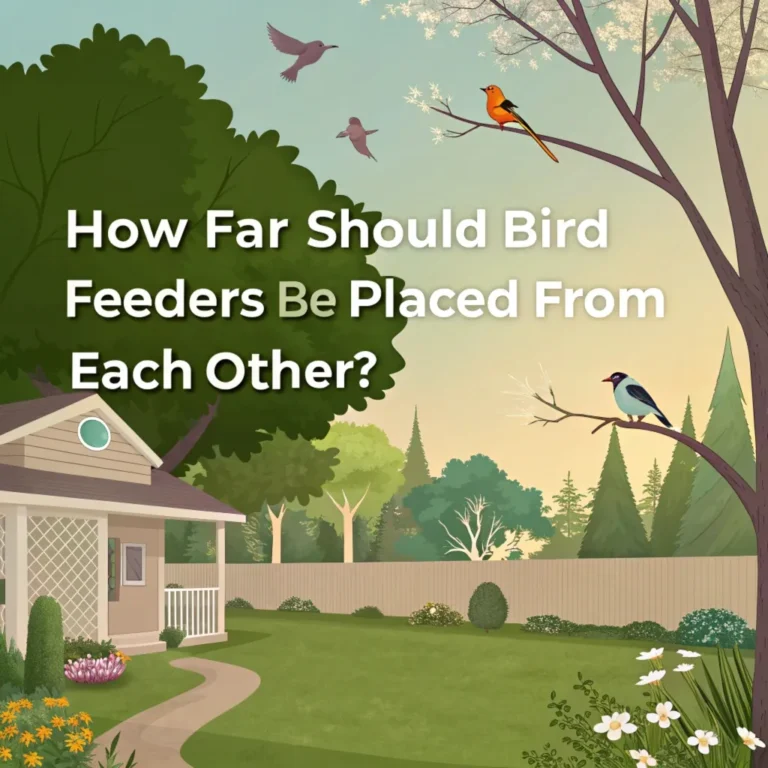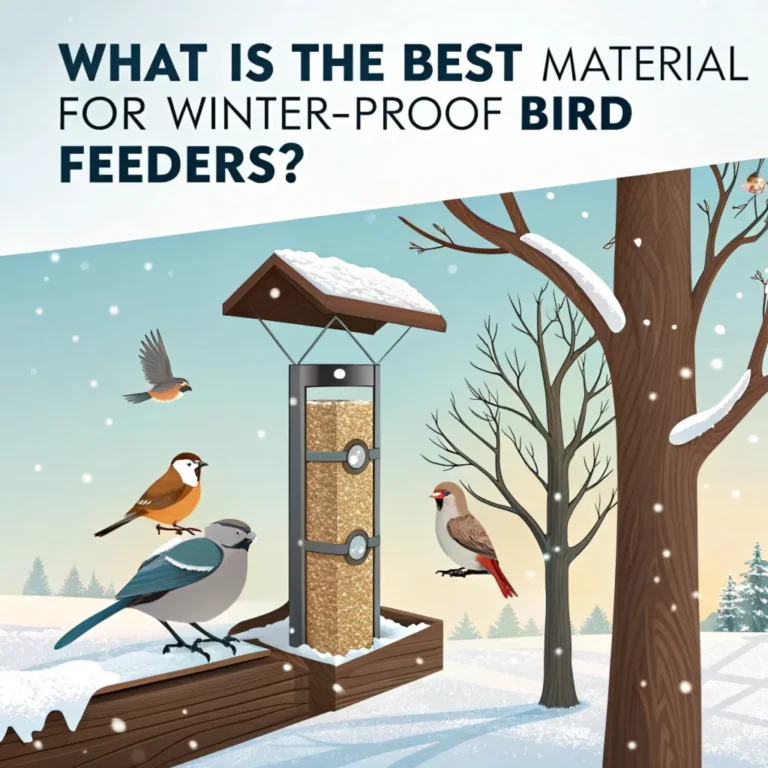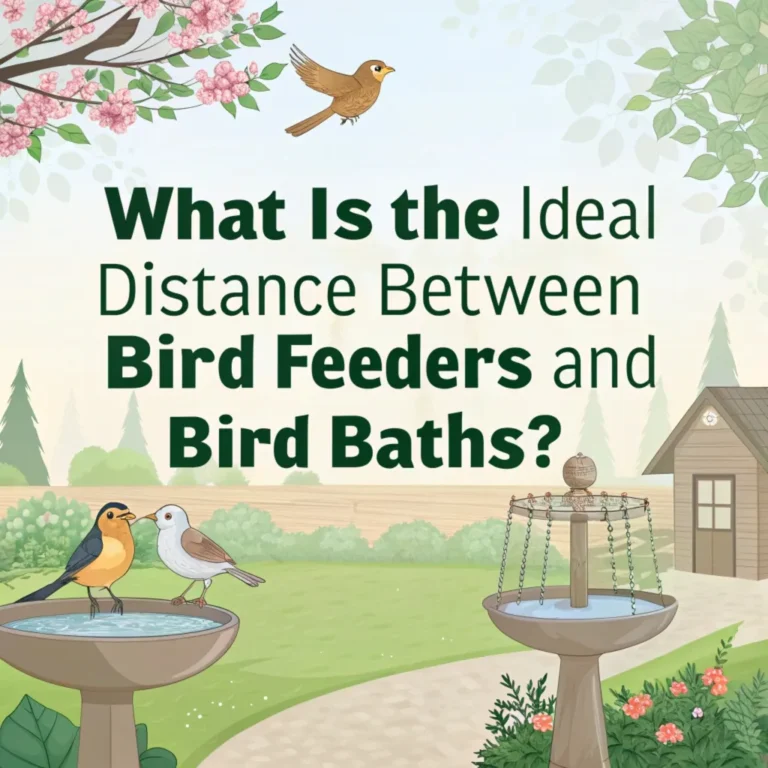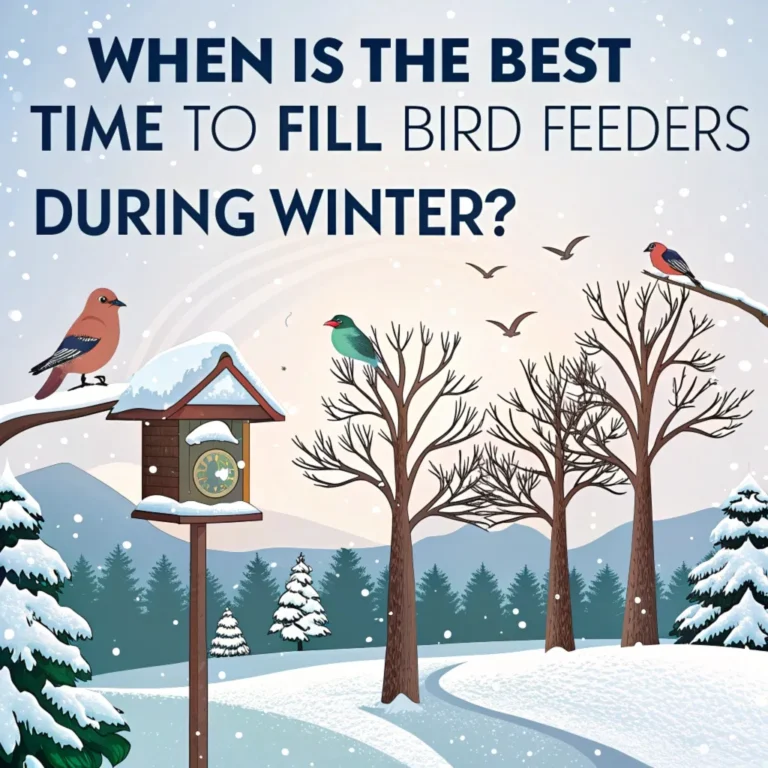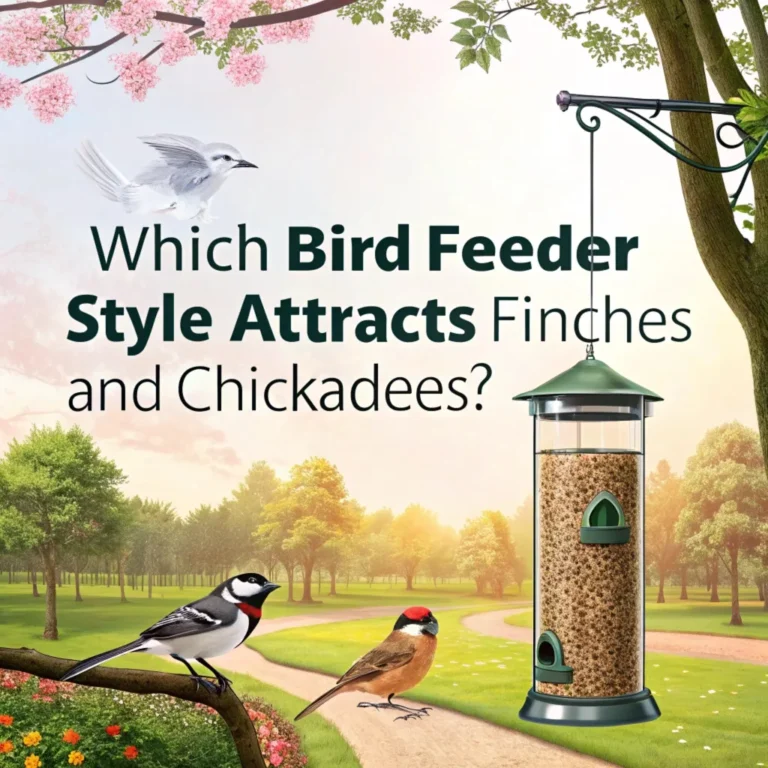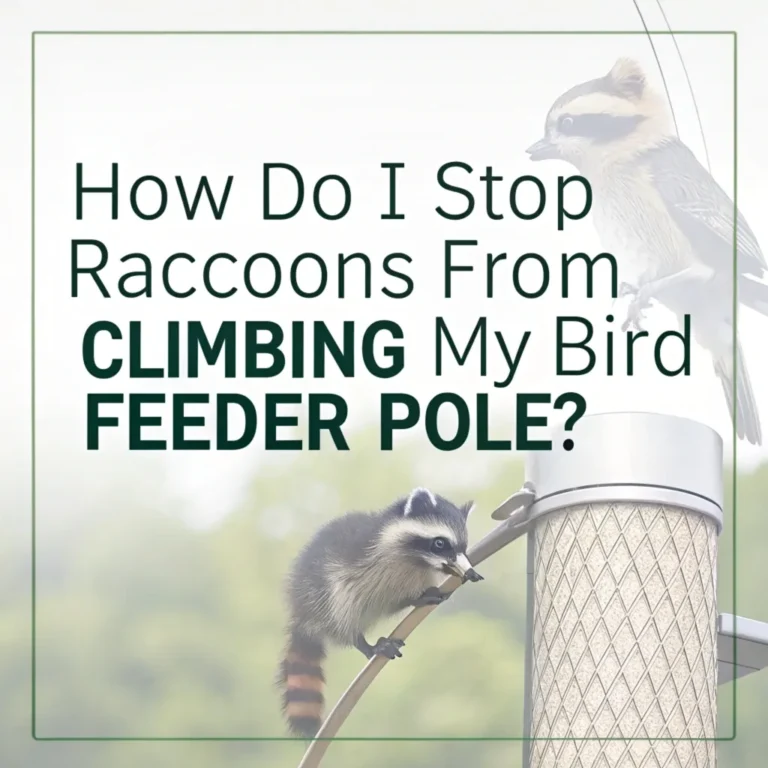How Do I Prevent Mold Growth in My Bird Feeder?
Bird feeders bring joy to our yards, attracting feathered friends with tasty treats.
However, these feeders can become breeding grounds for harmful mold if not maintained properly.
This guide will explore effective strategies to keep your bird feeders mold-free, ensuring the health and safety of your avian visitors.

Key Takeaways
- Clean feeders regularly: Wash feeders every two weeks with a bleach solution
- Keep seed dry: Use weather guards or place feeders in sheltered areas
- Manage seed quantity: Only fill feeders with what birds can eat in 1-2 days
- Proper storage: Store bird seed in cool, dry places in airtight containers
- Choose the right feeder: Select feeders with good drainage and ventilation
- Monitor seed quality: Remove wet or clumped seed promptly
- Clean surrounding areas: Rake up fallen seeds and hulls under feeders
- Use multiple feeders: Spread out feeding stations to reduce crowding
- Consider seed alternatives: Try no-mess blends or hulled seeds
- Regular inspections: Check feeders often for signs of mold or dampness
Understanding Mold in Bird Feeders
Mold thrives in damp, warm environments. Bird feeders create ideal conditions for mold growth when moisture from rain, snow, or bird droppings combines with leftover seed.
This mold can cause serious health issues for birds, including respiratory problems and infections.
Mold spores are microscopic and can spread quickly in the right conditions. They can contaminate not only the feeder but also the surrounding area, posing a risk to birds and other wildlife.
Understanding the factors that contribute to mold growth is crucial for effective prevention.
The impact of mold on birds can be severe, affecting their immune systems and overall health. By taking proactive steps to prevent mold, we can create a safer environment for our feathered visitors.
Regular Cleaning: The First Line of Defense
Frequent cleaning is crucial to prevent mold growth. Clean your feeders at least every two weeks, or more often in wet or humid weather. Follow these steps:
- Empty the feeder completely
- Disassemble the feeder if possible
- Scrub with hot, soapy water
- Rinse thoroughly
- Disinfect with a solution of one part bleach to nine parts water
- Rinse again and dry completely before refilling
Consistency is key when it comes to cleaning bird feeders. Establishing a regular cleaning routine helps prevent the buildup of harmful bacteria and mold.
It’s also important to use the right cleaning tools and solutions to ensure thorough disinfection without leaving harmful residues.
Proper drying after cleaning is often overlooked but is crucial in preventing mold growth. Ensure all parts of the feeder are completely dry before refilling with fresh seed.
Keeping Seed Dry
Moisture is mold’s best friend. To keep seed dry:
- Use weather guards or baffles over feeders
- Place feeders in sheltered areas, like under eaves
- Choose feeders with good drainage and ventilation
Strategic placement of bird feeders can significantly reduce moisture exposure. Consider the prevailing wind direction and rainfall patterns in your area when choosing feeder locations. This thoughtful approach can help maintain drier conditions for longer periods.
Innovative feeder designs now incorporate features specifically aimed at moisture control. Look for feeders with built-in ventilation systems or water-repellent coatings to enhance protection against dampness.
Managing Seed Quantity
Overfilling feeders leads to stale seed and potential mold growth. Instead:
- Fill feeders with only enough seed for 1-2 days
- Rotate old seed to the top when refilling
- Remove and discard any wet or clumped seed promptly
Monitoring bird feeding habits in your area can help you determine the right amount of seed to provide.
Observe how quickly birds consume the seed and adjust your filling routine accordingly. This practice not only prevents mold but also reduces waste.
Seasonal adjustments to seed quantities may be necessary. Birds’ feeding patterns often change with the seasons, so be prepared to modify your approach throughout the year.
Proper Seed Storage
Store bird seed properly to prevent mold before it reaches the feeder:
- Keep seed in airtight containers
- Store in a cool, dry place
- Inspect seed regularly for signs of moisture or mold
Quality control starts with proper seed storage. Investing in high-quality storage containers can make a significant difference in maintaining seed freshness.
Look for containers with tight-sealing lids and consider adding moisture-absorbing packets for extra protection.
Rotation of seed stock is also important. Use older seed first and keep track of purchase dates to ensure you’re always offering fresh food to your feathered friends.
Choosing the Right Feeder
Some feeder designs are better at preventing mold:
- Tube feeders with small ports limit moisture exposure
- Hopper feeders with good ventilation keep seed drier
- Tray feeders with drainage holes prevent water accumulation
Material selection plays a crucial role in feeder durability and mold resistance. Plastic feeders are often easier to clean but may degrade faster, while metal feeders can be more durable but may require more maintenance to prevent rust.
Innovative designs continue to emerge, offering improved protection against mold. Look for feeders with UV-resistant materials or antimicrobial coatings that can provide additional safeguards against mold growth.
Maintaining the Feeding Area
The area around your feeder is important too:
- Rake up fallen seeds and hulls regularly
- Use a platform or tray under hanging feeders to catch debris
- Move feeders periodically to prevent buildup of waste
Landscaping around feeding areas can contribute to a healthier environment. Consider planting mold-resistant ground cover or using permeable surfaces that allow for better drainage.
This can help reduce moisture retention in the soil beneath feeders.
Regular soil testing in high-traffic feeding areas can help monitor for potential issues. If soil becomes too acidic or compacted, it may contribute to mold growth and affect local plant life.
Using Multiple Feeders
Spread out feeding stations to:
- Reduce crowding, which can lead to more droppings and moisture
- Minimize the impact if one feeder develops mold
Diversifying feeder types can attract a wider variety of birds and distribute feeding activity.
Consider offering different types of food in various feeder styles to cater to different bird species’ preferences and feeding habits.
Strategic placement of multiple feeders can also help manage territorial behaviors among birds, creating a more harmonious feeding environment.
Considering Seed Alternatives
Some seeds are less prone to mold:
- Try no-mess blends with hulled seeds
- Use suet cakes in cooler weather
- Offer fruits or mealworms as alternatives
Experimenting with different food types can not only reduce mold risk but also attract a more diverse range of bird species to your yard.
Consider offering nectar feeders for hummingbirds or nut feeders for woodpeckers to complement your seed offerings.
Seasonal adjustments to your feeding options can align with birds’ changing nutritional needs throughout the year, ensuring a well-rounded diet for your feathered visitors.
Regular Inspections
Check your feeders often for signs of mold or dampness:
- Look for discoloration or fuzzy growth
- Feel for clumping or moisture in the seed
- Smell the seed for any musty odors
Developing a routine for feeder inspections can help catch potential issues early. Consider creating a checklist to ensure you’re consistently examining all aspects of your feeders and feeding areas.
Keeping records of your inspections and any issues found can help identify patterns over time, allowing you to make informed decisions about feeder maintenance and placement.
FAQs
How often should I clean my bird feeder?
Clean your bird feeder at least every two weeks, and more frequently during wet or humid weather.
What is the best cleaning solution for bird feeders?
Use a solution of one part bleach to nine parts water to disinfect bird feeders effectively.
Can birds get sick from moldy bird seed?
Yes, birds can develop respiratory issues and infections from eating moldy seed or inhaling mold spores.
How can I tell if bird seed has gone bad?
Look for signs of clumping, discoloration, or musty odors in the seed. If you notice any of these, discard the seed immediately.
Is it safe to use vinegar to clean bird feeders?
Yes, a solution of one part vinegar to three parts water can be used as an alternative to bleach for cleaning bird feeders.
By following these guidelines, you can maintain a clean, mold-free bird feeder that attracts a variety of healthy birds to your yard. Remember, a little prevention goes a long way in ensuring the well-being of your feathered visitors.

Luna is the passionate founder and author of Birds and You, a website dedicated to sharing her love for birds with fellow enthusiasts. Through her engaging articles and guides, she aims to educate and inspire others to explore the fascinating world of birds. When she’s not writing, you can find Luna observing birds in their natural habitats or sharing beautiful bird photography on Pinterest. Join her on this journey to celebrate and protect our feathered friends!


